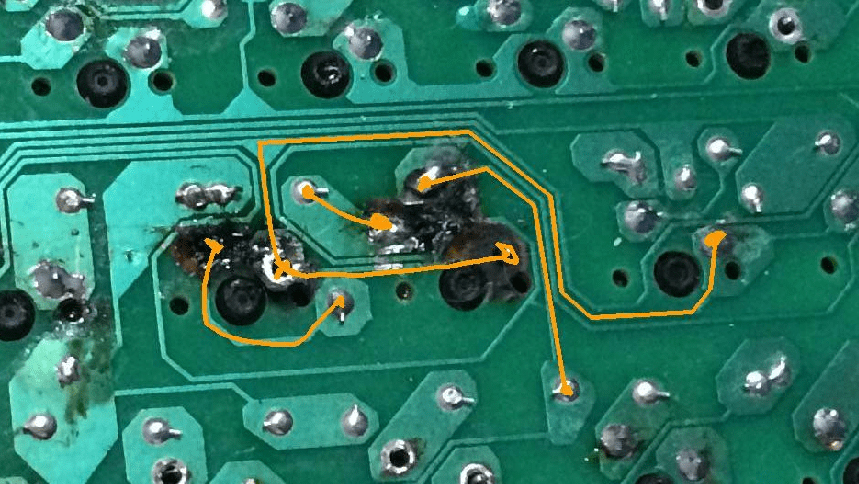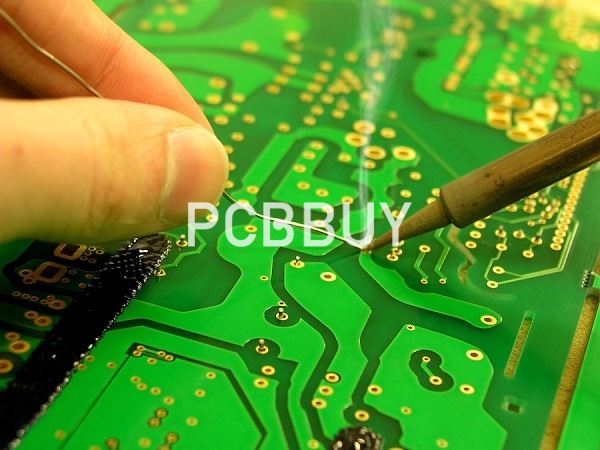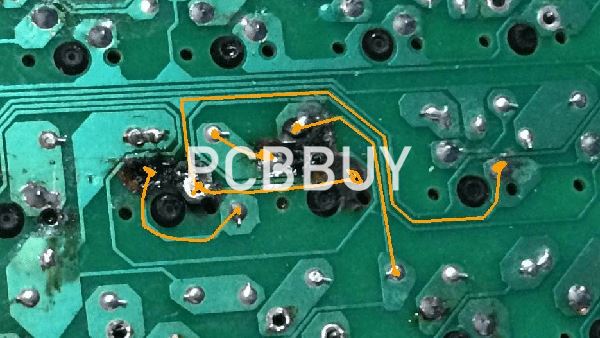PCB Failure Analysis:5 Common PCB Manufacturing Defects
By:PCBBUY 10/11/2021 09:08

Preparing for failure is part of the job as an engineer. Sometimes it’s inevitable and anomalies happen, although fortunately, each instance of PCB failure can be a learning experience. It’s all part of the process. But embracing PCB failure doesn’t mean you can’t minimize those occurrences where possible.
If you are looking for the professional information of PCB failure, you could check and read the content below for more information about common PCB failure. You can get all the details in this passage.

What is the importance of PCB failure analysis?
As smart phones, tablets, and wearable devices have become smaller, thinner, and more functional, PCBs and components continue to be even smaller, denser, and more layered. In the automotive industry, research and development of technologies such as automatic brakes and autonomous driving has promoted computerized control of important components. Such control then expects PCBs and electronic components to have high durability and reliability so as to withstand long-term stress caused by driving, accelerating, and stopping.
Terminals and devices now have an important role in various daily situations, and cars require a high degree of safety. Any failures and defects of important components that are computerized in such products can lead to serious trouble or accidents.
To evaluate the durability and reliability of PCBs and electronic components, reliability evaluation tests, including acceleration tests, have become increasingly important. In addition to such tests, using microscopes to identify defects and failure causes is more important than ever.

What are the 5 common PCB failures in manufacturing process?
1. Thermal Stress
The stress that is caused by heat or humidity is one of the leading causes of PCB failure. This is especially so, when a variety of materials have been used to make the PCB. Different materials have varying rates of expansion when placed under thermal stress, so this means that when a PCB is constantly under thermal stress, it can cause the solder joints to be weakened and this can cause potential damage to the components on the board.
PCBs that are for high performance applications will need to be able to appropriately dissipate the heat generated to reduce thermal stress. Another variable is if the correct weight of copper has been used on the PCB or if there are issues with plating. These variables can lead to the increase in thermal stress if not correctly applied.
2. Soldering issues
Solder is a key ingredient in the PCB process. It’s what maintains the contact between a component and circuit, but it can occasionally become contaminated and result in a board failure. If there is too much moisture in the solder, it can become conductive and cause short circuiting.
But it's more than the consistency of the solder you have to worry about, it's installation error, too. There are a few common types of solder defects, each effecting the board in different ways.
· Opens
· Excessive solder
· Component shifting
· Cold joints
· Solder bridges
· Webbing and splashes
· Lifted pads
3. Components defects
Any piece of electronic equipment will only perform as well as the components used to create it. If your PCB was manufactured using substandard components, or the board itself is of insufficient quality, you could eventually see visible surface defects such as leftover flux and loose soldering connections. Other symptoms of poorly manufactured PCB components include connection issues and pieces bending or breaking under stress.
4. Environmental factors
If you have resided in a warm-weather climate (Florida) for the majority of your life, then you can relate to a new recruit (Me) serving in the Navy in Great Lakes, Illinois experiencing culture shock during his first Chicago, winter. I can attest that temperature is a disruptive environmental factor.

Well, temperature is also a disruptive environmental factor when it pertains to electronic circuits. Temperature changes can indeed cause an electronic circuit to fail and in turn, cause a PCB’s malfunction. As you may know, with temperature changes, you will experience expansion and contraction of the PCB. These expansions and contractions, in turn, brings about the potential risk of a warped board and damage to solder joints.
5. Manufacturing and cleanliness
Most failure issues happen after the PCB has been manufactured, but they can happen during as well. The environment of the room where the assembly happened can affect the PCB; for example, humidity can affect the way components and solders act when assembled, so environmental conditions need to be controlled Another common failure is from not keeping PCBs clean during and after manufacture. Dust, hair and even bugs can get into the PCB; therefore precautions need to be taken.
Industry Category











